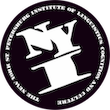4. Monday, January 23, 2023: "The Symbolic Domain"
Gillian Ramchand (University of Tromsø)
Abstract: Cartography tells us that there are robust crosslinguistic generalizations about the ordering of meaning elements in an extended functional projection (cf Cinque 1999). At the bottom of every functional sequence, we find evidence for a kind of substantive, conceptual, rich, yet flexible kind of meaning, as denoted by open class items. Evidence for this kind of layered meaning is pervasive and exceptionless crosslinguistically, yet it currently looks `accidental' or `templatic' from the point of view of our formal ontologies. Syntacticians describe, and then stipulate the labels in their hierarchic structures. Any such generalizations are either primitive or will eventually be explained by their semantics colleagues. Classical compositional semantics can be made to track the syntax, but does not attempt to explain it. Layering is a syntactic fact, not a semantic one. This is because the reliance on extensional formal ontologies where situations themselves, or referents, are fully specified particulars, makes the internal structuring of propositions a templatic matter for the semanticists as well. In this talk, I will argue that the semantic labels in classical cartography are not actually hierarchically ordered, unless one other factor is acknowledged: the distinction between \ essential, reusable content, and particularized, referential content. Firstly, I show that the same `meanings' can and do appear in different zones. Secondly, I show cases where the same zones and apparent `positions' have different content in different languages. Thirdly, I give evidence from neurolinguistics for the symbol as a multiformal, polysemic hub. Finally, I sketch the architectural and structural conclusions I draw from this.


